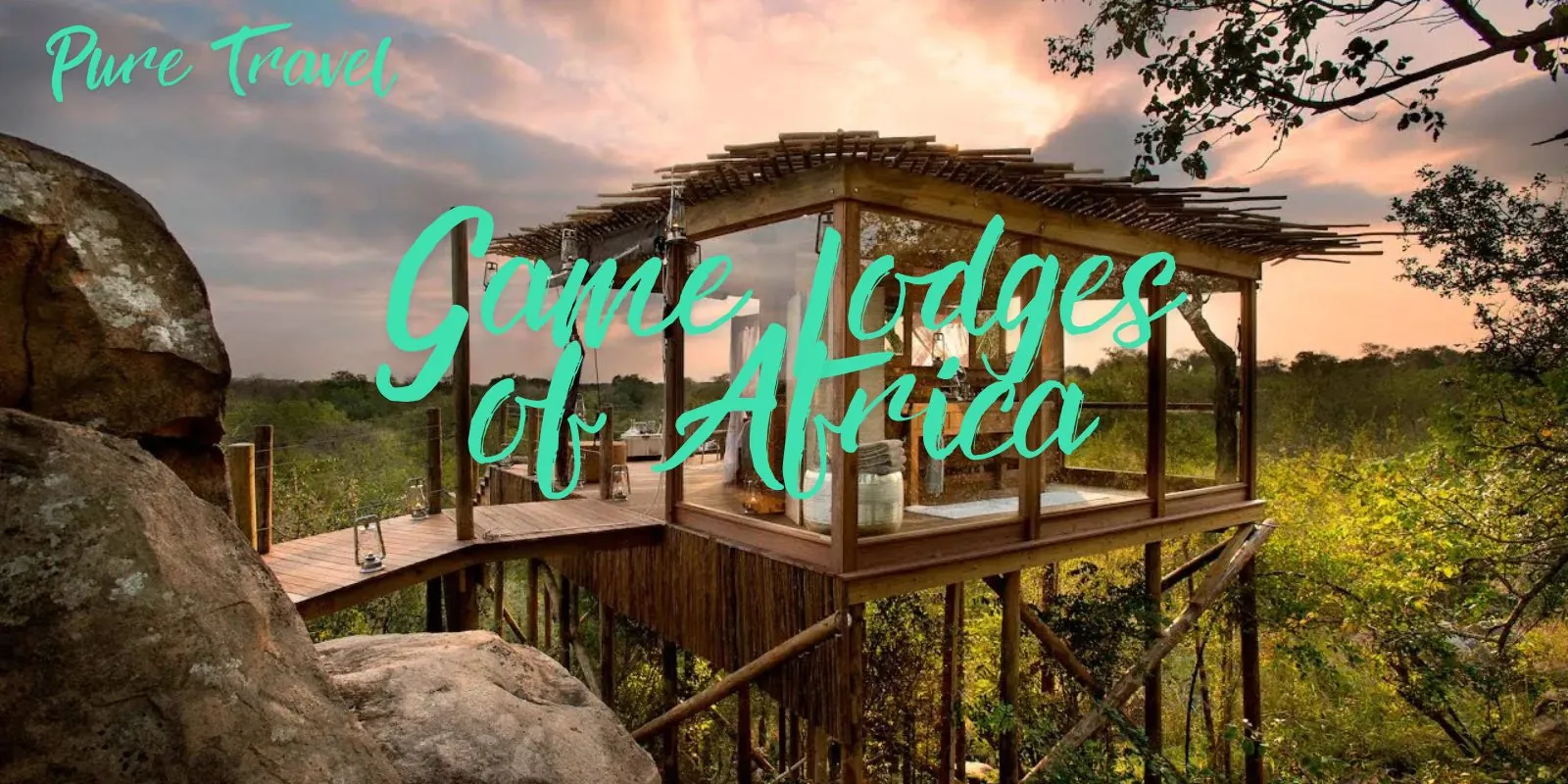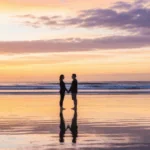Best Game Lodges of Africa: The Ultimate Safari Stays
Nestled in the heart of the African wilderness, these game lodges redefine the meaning of luxury safari travel. Game Lodges of Africa – From Madikwe’s unspoiled bushland to Sabi Sabi’s sculpted tranquility and Shumbalala’s Big Five encounters, every lodge invites you to connect deeply with nature while indulging in world-class comfort.
There’s something magical about waking up to the sound of lions roaring in the distance and the crisp scent of acacia trees after dawn. My partner and I set out to explore three of Africa’s most iconic game lodges — each unique in its atmosphere, style, and connection to the wild. From the rugged beauty of Madikwe to the tranquil luxury of Sabi Sabi and the intimate charm of Shumbalala, every stay offered a new chapter in our safari story.
Morning Arrival at Madikwe Safari Lodge
Our journey began northwest of Johannesburg, following a scenic drive that rolled through ochre hills and sunlit savannas. The moment we arrived at Madikwe Safari Lodge, the wilderness unfolded around us — 75,000 hectares of unspoiled terrain along the Botswana border. The air was earthy and warm, carrying the faint scent of wild sage and dust after a night’s rain.
The lodge’s décor struck the perfect balance between elegance and raw nature. Every brick and beam seemed to rise organically from the earth. We stayed at Lelapa Lodge, designed for families but equally welcoming for couples. The open-plan suite offered sweeping views of the bush, with soft linens and rustic stone textures that made us feel both grounded and indulged.
After settling in, we joined our ranger for a morning safari. Herds of elephants ambled across dry riverbeds, and we spotted a pride of lions lounging under a marula tree — their golden coats glinting in the rising sun. The bush teemed with life, from lilac-breasted rollers darting through the sky to the distant echo of hyenas.
Lunch was a feast of African flavors — grilled kudu, pap, and tangy chakalaka served with South African wine. The meal cost roughly R350 (AUD $28) per person and was every bit as memorable as the view from our deck.
Afternoon Tranquility at Sabi Sabi Earth Lodge
Our next stop took us deep into the Sabi Sand Reserve, where the Sabi Sabi Earth Lodge felt like a secret carved into the earth itself. The design was breathtaking — minimalist yet warm, with soft light filtering through clay-toned walls. This is one of Africa’s most environmentally sensitive lodges, built seamlessly into the landscape.
The moment I stepped onto our private terrace, the serenity of the bush wrapped around me. Each suite offered a private plunge pool and glass-fronted bathroom that opened directly to the savanna. We were lucky enough to stay in the Amber Presidential Suite — complete with an egg-shaped bath and a study overlooking a nearby waterhole.
That afternoon, we explored the lodge’s art gallery and meditation garden before joining an outdoor dinner under a blanket of stars. The aromas of grilled game meat and roasted vegetables mixed with the earthy scent of the bushveld. Dinner was paired with a South African Cabernet Sauvignon from the underground wine cellar — part of an impressive collection. The soft murmur of other guests and distant calls of jackals made for an unforgettable night.
Sunset Magic at Shumbalala Game Lodge
Our final destination, Shumbalala Game Lodge, lies adjacent to the famous Kruger National Park in the Thornybush Game Reserve. The northern plains shimmered in the late-afternoon sun as we arrived, greeted by the friendly staff with cool towels and a welcome drink — a zesty blend of lime and ginger.
Game Lodges of Africa – Shumbalala’s atmosphere was intimate and indulgent. Each suite came with a private deck overlooking the river and a picture-window bathroom that opened to the wild. That evening, we joined a sunset safari — and luck was on our side. We watched a leopard stealthily stalk impala through tall grass while the sky blazed orange and violet.
Dinner that night was pure romance — an al-fresco meal lit by lanterns. The air was scented with wild jasmine, and our table was set under an ancient tree. The chef prepared pan-seared ostrich fillet with red wine jus and Amarula-infused dessert, about R500 (AUD $40) per person. It was easily one of our most memorable dining experiences in Africa.
Evening Reflections – Game Lodges of Africa
As the fire crackled and the stars came out, I felt a deep sense of connection — not just with the land, but with the rhythm of nature itself. Game Lodges of Africa Each lodge we visited offered something different: Madikwe’s untamed wilderness, Sabi Sabi’s meditative calm, and Shumbalala’s intimate luxury. Together, they painted a vivid portrait of Africa’s soul — raw, elegant, and endlessly alive.
Pro Traveler Tip:
Book your safaris between May and October for cooler weather and the best wildlife viewing. For photography enthusiasts, bring a telephoto lens — the golden light during early morning and late afternoon drives is pure magic.
Pro Traveler Warning: – Game Lodges of Africa
Keep cash for park fees and gratuities (usually not included in your package). Some lodges have limited Wi-Fi, so download maps and guides beforehand. Also, avoid walking barefoot on decks at night — small scorpions sometimes wander in!
Your Safari Sanctuary Awaits
Whether you seek adventure, romance, or quiet communion with the wild, Africa’s game lodges offer sanctuaries of soul and scenery. From star-studded skies to sunrise safaris, these lodges remind us that true luxury is found not in excess — but in the beauty of the untamed.
FAQs – Best Game Lodges of Africa
What’s the difference between a game lodge and a safari camp?
Game lodges are usually permanent, well-appointed properties with fixed structures, private suites, restaurants and amenities (pools, spas). Safari camps—often tented—can be more rustic or seasonal. Both offer guided game drives and experienced rangers, but lodges generally provide more creature comforts and full-service dining.
When is the best time to visit game lodges for wildlife viewing?
The dry season (typically May–October in southern Africa) is prime for wildlife viewing as animals concentrate around water. Early mornings and late afternoons are the best times for game drives and golden-hour photography.
Are game lodges family-friendly?
Many lodges welcome families and offer family suites, child-friendly activities and shorter, tailored game drives. Age restrictions may apply for certain activities (night drives, walking safaris), so check each lodge’s child policy before booking.
What’s usually included in a lodge package and what extras should I expect to pay for?
Typical inclusions: accommodation, most meals, guided game drives, and park/concession fees. Extras often include premium beverages, spa treatments, private transfers, certain activities, and gratuities. Always confirm inclusions and any compulsory conservation or park fees when booking.
How should I pack and prepare for a stay at a game lodge?
Pack light, soft-sided luggage (many bush flights limit baggage to ~20 kg). Bring neutral-coloured, lightweight layers for daytime and warmer layers for cool mornings/evenings; a wide-brim hat; polarized sunglasses; reef-safe sunscreen; insect repellent; binoculars and a zoom lens for photography. Carry necessary meds, travel insurance, and some local currency or small bills for tips and incidental fees.







